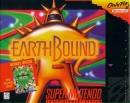Shadow1980 said:
@Bolded. That's what I meant when I said things have been "mostly just a series of general refinements." Advances in computing power have been amazing and have resulted in a lot of improvements. But for the most part they have not fundamentally changed the medium.
The NES was a major jump from the likes of the 2600 and Intellivision. Not only were the graphics far superior, the kind of games they were able to develop were amazing. Many genres were either born on or were able to come into their own on the NES. Platformers really took off, giving us amazing titles like Mario, Metroid, and Mega Man. The JRPG began to flourish with titles like Dragon Quest. There were amazing adventure games like Zelda that were only possible on a third-gen console like the NES. Over its life cycle, developers were able to squeeze a lot more out of the NES; while Super Mario Bros. was a big leap from Pitfall and Astrosmash, later NES titles had graphics that were just that much more amazing than SMB's were.
Then the 16-bit era came about and blew all that out of the water. Game worlds were not only a lot prettier, but the increases in computer power allowed developers to move the medium forward. Sonic's speed was only possible due to the power of the Genesis/Mega Drive. Games like Super Metroid and Link to the Past were larger, more complex, and more refined games than their NES originals. JRPGs really hit their stride here, as they were able to have bigger worlds, more characters, and deeper narratives; while NES classics required padding in the form of level grinding to keep it from being too short, the SNES's first major JRPG, Final Fantasy IV, didn't require level grinding, but still managed to give us a 40+ hour adventure due simply to its sheer scope. The SNES's Mode 7 ability was able to pull off quasi-3D effects to great effect, which made excellent racing titles like F-Zero and Mario Kart possible.
But gaming ran into a "where do we go from here?" situation. The 16-bit era saw pretty much the same kind of games we saw in the 8-bit era. Platformers, JRPGs, beat-'em-ups, shoot-'em-ups. Even versus fighting games, which came into their own with Street Fighter II, Mortal Kombat, etc., date back to 1984's Karate Champ.
The advent of true 3D polygon-based graphics allowed for things to progress from there. New genres and game experiences were able to proliferate, and old genres were reinvented. The fifth generation gave us titles like Super Mario 64, Tomb Raider, Ocarina of Time, and GoldenEye 007. None of these games were possible on older hardware. The switch to 3D didn't mean much for games where it didn't really impact gameplay (e.g., turn-based JRPGs) or that belonged to genres that had been trying to emulate 3D for a long time (e.g., racing games), but it drastically impacted platformers, fighting games, and action-adventure games, and allowed for first-person shooters to be a thing.
The sixth generation came into being as the 20th century yielded to the 21st, and evolved things even further. We saw Halo do things no previous console FPS did, giving us believable AI and massive outdoors environments as well as a deeper narrative. As you mentioned, we saw open world games like Grand Theft Auto III emerge, giving players a massive free-roaming game world with incredible amounts of choice in what one can do and where one could go. GTA's popularization of this This has parallels to the 2D era, where game worlds started small and got bigger and more detailed as the tech improved. And the open worlds of the 21st century have 20th-century antecedents of their own. The Legend of Zelda had a free-roaming non-linear world back in 1986, and there are even older example of games with open-world elements. Open world is an old concept, even if the tech has made for much bigger worlds. Sure, the sprawling game worlds of GTAV or RDR2 couldn't have been done on the PS1 or N64, but the increasing size of game worlds falls under the "gradual improvements over time" thing.
Aside from the increased feasibility of open-world games in Gen 6, gaming was already hitting another "where do we go from here?" wall by the turn of the century. You say Gen 8 had nothing new? That's been the case for a while. While the Dreamcast was the first console with built-in online capacity, and the Xbox the first to support broadband out of the box, with Xbox Live (and Halo 2 in particular) pushing further innovations for online play on consoles, online/networked gaming has been around since at least the 90s, maybe earlier (see Doom, Quake, Neverwinter Nights, EverQuest, etc.). LANs allowed multiplayer to be played on multiple screens instead of a single screen, and online moved things from local to global, allowing for a larger player base, so even that was a natural evolutionary progression.
As for motion controls, while Gen 7 did see the first successful attempts of that tech with the Wii and, later on, the Kinect, and while it may have seemed like the sole innovation of last generation, it wasn't a truly new way to play. There had already been several attempts at motion controls since the late 80s (e.g., the Power Glove, U-Force, and Sega Activator). Sure, they failed, but motion controls as a concept are old news. The Wii was the first time anybody was able to do motion controls right, but they were still nothing new, and they've been more or less a dead end in game development outside of VR, with Nintendo scaling back tremendously on them after the Wii and MS flat-out abandoning Kinect.
In each case, while technological advancements have allowed for many things that simply were not possible in older generations, the history of gaming has been one of gradual stepwise evolution, not a series of revolutions. The way we play games has not changed fundamentally. In addition to the examples above about seemingly newer innovations actually being quite old, most genres have existed since the 80s and some since the 70s, and even the ones that are heavily associated with the 3D era have older 2D antecedents. Much of the 2D-to-3D shift was basically developers figuring out how to translate existing genres to 3D. 3D-era shooters in general, both first- and third-person, are arguably evolved from run-and-gun shmups like Contra, just shifted to a 3D world and a new perspective (look at how easily Metroid shifted from a side-scroller to an FPS). Games like God of War and Bayonetta descended from old school beat-'em-ups like Double Dragon, River City Ransom, and Final Fight. Even things that essentially require 3D or some approximation of it aren't new; first-person games in general have been a thing since Maze War and Battlezone. There has been very little in the way of major game-changing innovations since the turn of the century. All the big innovations have been around for quite some time, and game developers have basically been building upon all those old preexisting concepts. There is nothing new under the sun.
This isn't a knock against the industry. It's simply a description of how things are. Things have improved drastically. I've been playing video games since the mid 80s, before "Nintendo" became a household name, and the progress from old Intellivision, Atari, and classic arcade games to the high-definition worlds of today has been amazing to watch. The gameplay experiences we have today as well as the accompanying visuals and audio have evolved remarkably. But ultimately they're just that: evolutionary. Writ large, each new generation of consoles have been "better graphics boxes," but that's not a bad thing. It's a good thing.
|

























































